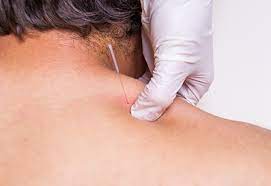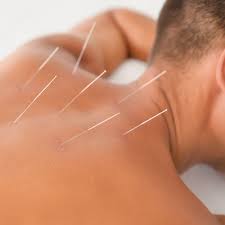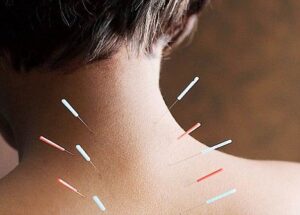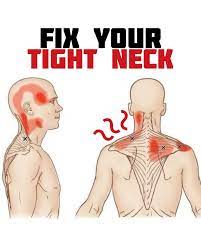

Muscle tightness in the neck and shoulders is a common issue caused by stress, poor posture, and overuse.
When muscles become tight, they form knots or trigger points, leading to pain, restricted movement, and even headaches.
One effective method to relieve this tension is needle therapy, which includes techniques such as dry needling and acupuncture.
These methods use thin needles to stimulate the muscles, promoting relaxation and improving blood flow.
Scientific research has shown that needle therapy can effectively release muscle tension by targeting specific trigger points, reducing pain, and restoring mobility.
In this article BestForwardHeadPostureFix explores how and why needles stimulate muscle release in the neck and shoulders, backed by scientific evidence and expert insights.
Article Index
- Understanding Muscle Tightness in the Neck and Shoulders
- How Needle Therapy Works for Muscle Release
- Types of Needle-Based Techniques for Muscle Tension
- The Science Behind Needle Stimulation and Muscle Relaxation
- How Needles Affect Neuromuscular Function
- Benefits of Needle Therapy for Neck and Shoulder Pain
- Who Can Benefit from Needle Therapy?
- Possible Risks and Precautions
- Conclusion
Understanding Muscle Tightness in the Neck and Shoulders
The neck and shoulders are particularly vulnerable to muscle tension due to several lifestyle and environmental factors.
- Poor Posture: Forward head posture, rounded shoulders, and prolonged slouching increase strain on the cervical spine and shoulder muscles. This imbalance leads to chronic stiffness and discomfort.
- Repetitive Movements: Activities like prolonged desk work, excessive phone use, and repetitive lifting place continuous stress on the muscles, leading to microtrauma and muscular fatigue.
- Stress and Anxiety: Psychological stress triggers the body’s fight-or-flight response, causing involuntary muscle clenching, particularly in the upper trapezius, levator scapulae, and sternocleidomastoid muscles. Nerd neck compromises your shoulder ability thereby hampering your natural shoulder movement.
- Injury or Overuse: Past injuries, improper lifting techniques, or excessive use of the neck and shoulders can lead to chronic tightness, inflammation, and restricted mobility.
When muscles tighten, they develop trigger points, which are hypersensitive nodules within muscle fibers.
These trigger points cause localized pain and referred pain patterns, such as tension headaches.
As per The Journal of Pain Medicine, needle therapy is an effective technique for targeting and releasing these trigger points, restoring mobility, and reducing pain.
How Needle Therapy Works for Muscle Release?
Needle therapy is an effective technique for alleviating muscle tightness by stimulating a physiological response within the body. It involves inserting fine needles into areas of muscle tension to promote relaxation and improve circulation.
The two primary forms of needle therapy used for muscle release are dry needling and acupuncture:
- Trigger Point Dry Needling (TDN)
- This method is commonly used by physical therapists and sports medicine professionals.
- A thin needle is inserted directly into a trigger point (a tight band of muscle fibers).
- This causes a “twitch response,“ which helps reset the muscle, reducing tightness and restoring normal function.
- Acupuncture
- Rooted in traditional Chinese medicine, this method targets specific meridian points.
- Acupuncture improves energy balance, enhances blood flow, and reduces inflammation.
- It stimulates endorphin release, which naturally alleviates pain and promotes healing.
Both methods activate the body’s natural pain-relief mechanisms, improve muscle relaxation, and enhance neuromuscular function.
According to The Journal of Orthopedic & Sports Physical Therapy, needle therapy significantly reduces muscle tightness and improves mobility, making it an effective treatment for chronic neck and shoulder tension.
Types of Needle-Based Techniques for Muscle Tension
Several needle-based therapies effectively reduce muscle tightness and improve mobility in the neck and shoulders.
The choice of technique depends on the severity of muscle tension and the patient’s specific condition.
- Superficial Dry Needling
- Needles are inserted just under the skin to stimulate nerve endings and promote relaxation.
- A study in The Journal of Pain Research found that superficial dry needling helps reduce muscle sensitivity and improve pain tolerance.
- Deep Dry Needling
- Targets deep muscle layers to break up knots and relieve chronic tension.
- Research in The Journal of Orthopedic & Sports Physical Therapy indicates that deep needling significantly reduces trigger point activity.
- Electroacupuncture
- Needles are connected to a low electrical current, enhancing muscle stimulation.
- The Journal of Acupuncture and Meridian Studies found that electroacupuncture improves blood flow and neuromuscular function.
- Intramuscular Stimulation (IMS)
- Used to treat neuropathic pain by releasing hyperactive muscles.
- According to The Journal of Musculoskeletal Pain, IMS helps restore normal muscle tone and reduce nerve-related discomfort.
These needle therapies are proven to enhance muscle relaxation, circulation, and pain relief, making them effective tools for treating neck and shoulder tightness.
The Science Behind Needle Stimulation and Muscle Relaxation
Extensive research supports the effectiveness of needle therapy in reducing muscle tightness and improving mobility.
- Disrupting Dysfunctional Motor Endplates
- The Journal of Pain Research states that dry needling disrupts motor endplates, neuromuscular junctions responsible for muscle contractions.
- This interruption helps reset muscle activity, reducing chronic tension and stiffness.
- Improving Blood Flow and Reducing Inflammation
- The Journal of Orthopedic & Sports Physical Therapy found that dry needling significantly enhances local circulation, delivering oxygen and nutrients to tense muscles.
- This process helps flush out inflammatory chemicals, accelerating muscle recovery.
- Triggering Natural Pain-Relief Mechanisms
- Needle insertion stimulates endorphins and serotonin, the body’s natural pain-relieving chemicals.
- A study in The Journal of Acupuncture and Meridian Studies shows that acupuncture and dry needling activate these neurotransmitters, promoting relaxation and reducing pain sensitivity.
Scientific evidence confirms that needle therapy effectively relieves muscle tension, improves circulation, and enhances pain management, making it a valuable treatment for chronic neck and shoulder tightness.
How Needles Affect Neuromuscular Function
Needle therapy promotes muscle relaxation through several key physiological mechanisms:
- Triggering the Twitch Response
- When a needle is inserted into a trigger point, it induces an involuntary contraction, known as the twitch response.
- This reflexive contraction resets muscle function, breaking the cycle of chronic tension.
- Research in The Journal of Musculoskeletal Pain suggests that triggering this response enhances neuromuscular control, improving muscle performance.
- Improving Blood Circulation
- Needling increases local blood flow, delivering oxygen and nutrients to tight muscles.
- A study in The Journal of Sports Medicine found that enhanced circulation speeds up muscle repair and flushes out metabolic waste, reducing soreness.
- Neuromodulation
- Needles disrupt pain signals traveling to the brain, helping to calm overactive nerves.
- The Journal of Pain Research states that this reduces chronic muscle hyperactivity, restoring normal function.
- Decreasing Inflammation
- Needling triggers a localized immune response, releasing anti-inflammatory molecules that promote healing.
- This process reduces swelling and accelerates tissue regeneration, supporting long-term muscle health.
These mechanisms explain why needle therapy is an effective tool for relieving muscle tightness and improving movement in the neck and shoulders.
Benefits of Needle Therapy for Neck and Shoulder Pain
Needle therapy offers numerous advantages for individuals experiencing neck and shoulder tightness, making it an effective treatment option for pain relief and improved mobility.
- Pain Reduction: Research indicates that dry needling therapy significantly alleviates neck and shoulder pain by targeting trigger points and reducing muscle tension.
- Improved Mobility: Releasing tight muscle fibers enhances flexibility and restores a full range of motion, allowing for greater ease of movement.
- Faster Muscle Recovery: By increasing blood circulation to affected areas, needling accelerates muscle healing and reduces soreness.
- Reduced Tension Headaches: Many headaches stem from neck tension, and needle therapy effectively alleviates these symptoms by relaxing the associated muscles.
- Decreased Stress Levels: Releasing muscle tightness helps lower physical stress responses, promoting relaxation and overall well-being.
These benefits make needle therapy a valuable option for those struggling with chronic muscle tightness, improving both physical comfort and daily functionality.
Who Can Benefit from Needle Therapy?
Needle therapy can be a great option for a variety of people dealing with muscle tightness and discomfort. If you fall into any of these categories, it might be worth considering:
- Chronic Neck and Shoulder Pain: If muscle tightness is making everyday tasks uncomfortable, needling can help relieve tension and restore movement.
- Athletes and Active Individuals: Whether you’re a runner, weightlifter, or weekend warrior, needle therapy can help ease muscle soreness and speed up recovery from overuse injuries.
- Office Workers: Sitting at a desk all day often leads to poor posture and stiffness—needling can help loosen up those tight muscles.
- Individuals with Trigger Points: If you struggle with deep muscle knots that cause pain in other areas, needling can release these trigger points.
- People with Tension Headaches: If your headaches stem from neck and shoulder tension, this therapy could bring much-needed relief.
Before starting, it’s always a good idea to check with a qualified healthcare professional to ensure it is right for you!
Possible Risks and Precautions
While needle therapy is generally safe and well-tolerated, there are a few precautions to keep in mind. Research supports its effectiveness, but some temporary side effects may occur:
- Temporary Soreness: Mild discomfort is common after treatment as muscles respond to the therapy. A study published in Pain Medicine found that post-needling soreness typically resolves within 24–48 hours.
- Bruising or Minor Bleeding: Since needles may puncture tiny blood vessels, slight bruising can occur. According to the Journal of Orthopaedic & Sports Physical Therapy, this is usually minimal and fades quickly.
- Dizziness or Fatigue: Some individuals report feeling lightheaded or tired post-treatment. A systematic review in Acupuncture in Medicine suggests this is due to the body’s physiological response to muscle release.
- Infection Risk: Though rare, improper sterilization can lead to infection. The World Health Organization emphasizes that practitioners must use single-use, sterile needles.
To reduce risks, always seek treatment from a certified, experienced practitioner trained in needle-based therapy.
Final Thoughts
If your neck and shoulders feel like they’ve been twisted into a human pretzel, needle therapy might be the magic trick you need!
This powerful technique goes straight to the source of muscle tightness, targeting those stubborn knots, boosting blood flow, and giving your nervous system a well-needed nudge to relax.
Science has our backs (literally) on this one—studies show that dry needling and acupuncture work wonders for muscle release, making them fantastic allies in the battle against poor posture and nagging pain.
So, if you’re tired of feeling stiff and sore every day, why not give needle therapy a shot? With a skilled practitioner guiding the way, you could be well on your way to moving with ease, ditching discomfort, and finally standing (or sitting) tall without feeling like a bundle of tension.
Who knew a few tiny needles could pack such a big punch?
References:


